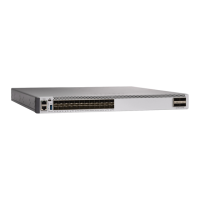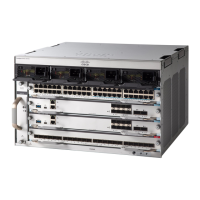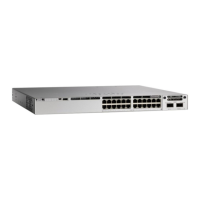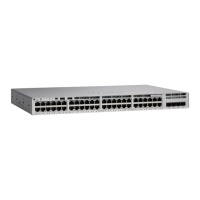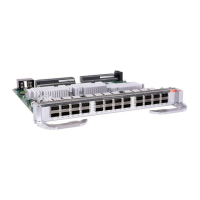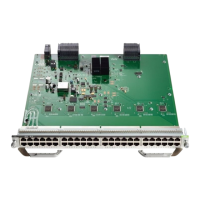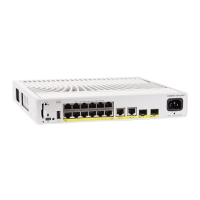BFD Session Limits
Starting Cisco IOS XE Denali 16.3.1, the number of BFD sessions that can be created has been increased to
100.
BFD Support for Nonbroadcast Media Interfaces
Starting Cisco IOS XE Denali 16.3.1, the BFD feature is supported on routed, SVI and L3 portchannels.
The bfd interval command must be configured on the interface to initiate BFD monitoring.
BFD Support for Nonstop Forwarding with Stateful Switchover
Typically, when a networking device restarts, all routing peers of that device detect that the device went down
and then came back up. This transition results in a routing flap, which could spread across multiple routing
domains. Routing flaps caused by routing restarts create routing instabilities, which are detrimental to the
overall network performance. Nonstop forwarding (NSF) helps to suppress routing flaps in devices that are
enabled with stateful switchover (SSO), thereby reducing network instability.
NSF allows for the forwarding of data packets to continue along known routes while the routing protocol
information is being restored after a switchover. With NSF, peer networking devices do not experience routing
flaps. Data traffic is forwarded through intelligent line cards or dual forwarding processors while the standby
RP assumes control from the failed active RP during a switchover. The ability of line cards and forwarding
processors to remain up through a switchover and to be kept current with the Forwarding Information Base
(FIB) on the active RP is key to NSF operation.
In devices that support dual RPs, SSO establishes one of the RPs as the active processor; the other RP is
designated as the standby processor, and then synchronizes information between them. A switchover from
the active to the standby processor occurs when the active RP fails, when it is removed from the networking
device, or when it is manually taken down for maintenance.
BFD Support for Stateful Switchover
The BFD protocol provides short-duration detection of failures in the path between adjacent forwarding
engines. In network deployments that use dual RP routers or switches (to provide redundancy), the routers
have a graceful restart mechanism that protects the forwarding state during a switchover between the active
RP and the standby RP.
The dual RPs have variable switchover times that depend on the ability of the hardware to detect a
communication failure. When BFD is running on the RP, some platforms are not able to detect a switchover
before the BFD protocol times out; these platforms are referred to as slow switchover platforms.
BFD Support for Static Routing
Unlike dynamic routing protocols, such as OSPF and BGP, static routing has no method of peer discovery.
Therefore, when BFD is configured, the reachability of the gateway is completely dependent on the state of
the BFD session to the specified neighbor. Unless the BFD session is up, the gateway for the static route is
considered unreachable, and therefore the affected routes will not be installed in the appropriate Routing
Information Base (RIB).
For a BFD session to be successfully established, BFD must be configured on the interface on the peer and
there must be a BFD client registered on the peer for the address of the BFD neighbor. When an interface is
used by dynamic routing protocols, the latter requirement is usually met by configuring the routing protocol
Routing Configuration Guide, Cisco IOS XE Everest 16.6.x (Catalyst 9500 Switches)
4
Configuring Bidirectional Forwarding Detection
Information About Bidirectional Forwarding Detection

